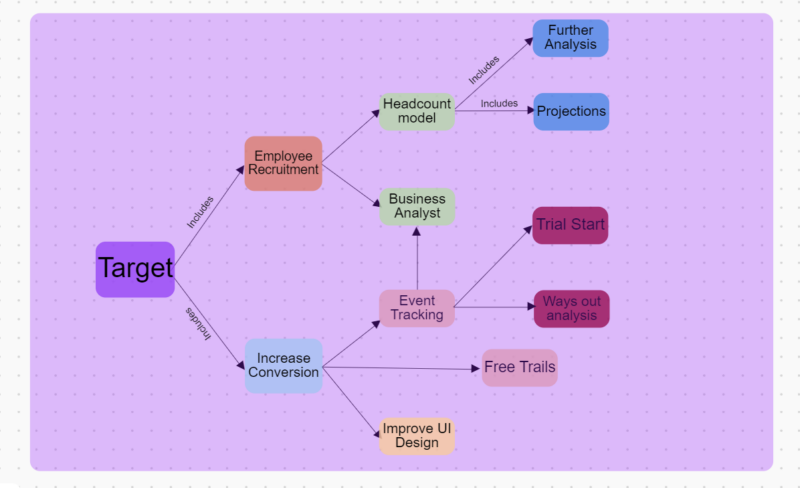Concept maps have become a well-known tool for expressing concepts and ideas visually. Using these maps to express your ideas or concepts has many benefits for both presenters and viewers who are trying to learn. It helps improve understanding and comprehension and makes it easy to demonstrate the link between the various elements in a concept or idea.
This article discusses concept maps and the main advantages of concept maps.
The Basic Features of a Concept Map
Concept maps have certain characteristics that differentiate them from other diagrams and visualizations. The following are the main features of a concept map:
- The Concept/s
Since every concept has different working components, they need to be organized hierarchically using shapes like boxes, circles, or rectangles.
- Hierarchical Structure
Concept maps are arranged based on the hierarchy of ideas.
- Linking Words/Phrases
Linking words or phrases follow the lines connecting objects in a concept map. They describe the relationship between two concepts and are kept concise.
The Benefits of Using a Concept Map
They are very useful for teaching students how to orgainze their thinking about different topics and concepts. The benefit of concept maps is that they can be tailored to practically any course or design. They provide students with a hands-on exercise that keeps them engaged throughout courses. The following are some advantages of using concept maps:
Helps in making presentations
Concept maps to aid in organizing ideas and making presentations. They follow a logical path and concise format to visualize ideas. They serve as a guide for developing short, analytical presentations. Concept maps can even be used by presenters to help structure their presentation notes, even if they do not exhibit them during the presentation.
Makes it easy to interpret a concept
Visualizing information, makes it easily understandable quickly. Compared to reading books, it’s much easir to grasp ideas or concepts by using concept maps. Since concept maps are concise and highlight the key points, people can easily skim through and understand the entire system.
Helps visualize your end goals
Since cross-links demonstrate the link between concepts, they clarify how one may influence another. This assists in making decisions regarding the overall advantages of a plan. It can also assist people in understanding the potential indirect consequences of an action or programme.
Structures your Concept Hierarchially
Organized based on the hierarchy of ideas, concept maps usually go from top-to-bottom. With the most general ideasdisplayed at the top, progressing into smaller details. This feature helps people understand the relationship between ideas and how they link.
Concepts start at a point, and branch off into sub-categories, eventually leading to the end goal.
Explains The Relationship between different elements of a concept
Concept maps help explain the link betweem ideas and concepts. The relationship between each idea can have single or multiple sub-categories. To illustrate how concept maps explain the relationship between ideas, here’s an example:

Endnote
Concept maps are excellent visualization tools that help explain concepts in a format that is easy to understand. They use diagrams, symbols, arrows, and linking words to show the relationship between ideas in a concept. Concept maps are particularly useful for teams that intend to work collaboratively.
Learn more: What is Concept Map?
Most Recent Posts
Explore the latest innovation insights and trends with our recent blog posts.













